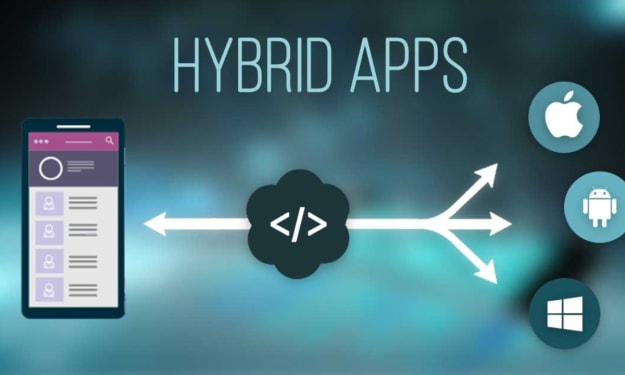The Right Way of Choosing The Tech Stack For Mobile App
Choosing the right app stack for app development becomes easy!

Without a strong and sturdy foundation, constructing a building is a tough nut to break. Similarly, it is vital to choose the best tech stack for mobile app development. The iOS or Android app development process is not just about eye-catchy user interface & seamless user experience.
It is a process that assures supreme quality, scalability, level of security, budget, and development cost. An app technology stack is a collection of programming languages, APIs, frameworks, tools, etc., that are required for conceptualizing a mobile app.
Every technology stack for mobile varies from app to app because it is different for every mobile application. An app development team needs to select the right technology stack. It can upscale the development process and make the final product successful & rewarding.
As per Statista, Android bagged first place in the mobile operating system market in 2021. Android took the lead with nearly 70% shares followed by iOS with 25% shares.
But how’d you choose the best tech stack for mobile app development? We’ve compiled a list of expert-reviewed stacks for mobile apps.
Why It Is Crucial To Choose The Right Tech Stack?
Right from the initial app development stages to the final product, it is the app tech stack that determines the success of the app. Parameters like scalability, functionality, core features, and robustness as per the wireframe of the app are considered.
Types of Mobile Apps
Before finalizing on the prospective tech stack, it is important to understand the type of the
application. As we mentioned previously that every tech stack varies from app to app, you need to carefully envision the final product.
There are 3 kinds of mobile apps:
A.) Native apps
The most common apps seen on the Play Store and App Store are native apps. As the name suggests, these apps are platform-oriented and created considering the features of the operating system.
Apps like a calculator, calendar, alarm clock, default browser, camera, and every other feature that can work offline are the best examples of native apps. Since these apps are intuitive, using them doesn’t perplex the consumer.
B.) Cross-platform apps
Cross-platform apps, as the name suggests, are those applications that run on multiple devices simultaneously. This mobile app technology is conceived by compiling the source codes for execution.
All cross-platform apps share the same code base that connects them to the native component. This feature makes them less expensive as compared to native apps. Although a cross-platform app simplifies the work, it is harder to maintain. Hence, developers emphasize native apps for mobile development.
C.) Hybrid apps
Just like cross-platform apps, hybrid apps run on multiple platforms. Basically, hybrid apps are web apps created using standard web development tools. This wireframe enables them to function on major platforms like iOS, Android, and the web.
The only drawback of hybrid apps is the speed. As compared to native and cross-platform apps, hybrid apps respond at a slower pace.
Before Choosing the Stack for Mobile Apps
Without understanding the technicalities & pros and cons of a mobile app stack, you simply cannot choose it to get the work done. Clearing the fog from features, technological configuration & compatibility, along with the project requirement(s) becomes essential.
Thus, chalking out the borders of the project is vital & should be discussed with the development team. Below, the key points for the app stack are listed. These points should be considered for choosing the best tech stack for mobile app development.
1. Project Requirements
This section includes everything about the core functionalities and features you see in the final product. What technologies must be integrated that make the final product stand out in the market? How secure would the product be? Would it be a cross-platform app or a hybrid app?
Finding out the answer to such questions would simplify your app stack selection.
Project type
Once all your requirements are crystal clear, you can make up your mind for choosing the type of project. Based on the requirements, it becomes clear to select the stack for hybrid, native, or cross-platform applications.
Budget
Budget is one of the prominent factors that must be considered before finalizing the final app stack for your mobile apps. The budget of the project is determined by the technology chosen for the development process. Some technologies are expensive, whereas, some are not.
Estimated Delivery Date
The app development process can be time-consuming or accomplished within a timeframe. Since it all depends on the project type and technology chosen, providing an estimated delivery date is a vital part of the iOS and android app development process. With an estimated delivery date, your development team would put in efforts accordingly to accomplish the goal on time.
Compatibility with New Technology
There can be a probability that a project doesn’t get developed from scratch. Under such conditions, it is recommended to check the compatibility of the app stack. It would aid in giving a hang of the technology that can be integrated aptly.
2. The iOS Development Stack
For iOS mobile apps, programming languages like Objective C and Swift are prominently used by a development team. Objective C is a trusted technology and offers a rich development environment. Several apps for the iOS platform are created using Objective C.
Swift, on the other hand, is an open-source language. It is a simple language with intuitive code that makes it the developer’s favorite. There’s no rocket science required to understand the code.
The integrated development environments (IDE) for the iOS development stack include:
Apple Xcode
Xcode is the kit that developers use for developing native iOS apps. The IDE of Xcode allows developing mobile as well as desktop applications. The kit is integrated with documentation, Git repositories, edit the refractor code, and an in-built engine that performs testing for the iOS platform.
Intelli-J App code
Intelli-J App code is a kit compatible with Xcode. It supports programming languages like C++, Java, HTML, CSS, Swift, Objective-C, etc. The Intelli-J app code IDE is embedded with on-the-fly code analysis, refactoring capabilities, debugging, and compatibility with debugging software.
Tech Stack For Android App Development
Android native app development is usually executed using programming languages like Java or Kotlin. Java is included in the stack for your mobile app because of its vast open-source tools and libraries that help developers code the app.
Kotlin, on the other hand, is a stable development option for the android studio. It would be wrong to say that Kotlin was developed for improving Java-based web applications by providing API design deficiencies.
Below, the kit of android app development tools has been shared.
Android Studio
The Android Studio is an android app development tool that allows developers to create high-quality android applications. This tool is equipped with features like a code editor, visual editor, in-built profiling tools, and a lot more.
ADT
ADT or android development tools are prominent requirements for creating a successful android mobile application. Plugins like custom XML editors, emulators, and test automation support are provided in ADTs. Unarguably, using an ADT is a swift way for kickstarting android app development.
Android SDK
A code can be easily simplified & accomplished faster, especially for integrating additional features, by utilizing android SDK. It can be downloaded separately for every android device. As per early reports by Statista, Google Firebase was the largest SDK having 91% integration in January 2022. It was followed by Google Fabric Crashlytics with 21% integrations.
Tech Stack For Cross-Platform App Development
Cross-platform app development means developing the same app that operates on major operating systems simultaneously. With this approach, android and iOS app developers use a single code base so that the app adapts to different mobile devices easily.
React Native
React Native is a JavaScript (JS) framework having ‘reusable’ components. These native reusable components can be compiled directly into their counterparts of the android and iOS apps. If a developer wants to mend an app, it can be achieved by integrating React Native components into the code.
Using React Native, the app logic is embedded in JS and the UI stays native. Social media apps like Instagram, Facebook, and Skype are prominent examples of React Native mobile app development.
Xamarin
Xamarin is a tool used for cross-platform app development. This tool uses C# as the primary coding script. C# has a mature toolkit with IDE support. All mobile and desktop apps coded in C# are cross-compiled and native to all android and iOS devices.
Popular apps like Pinterest and Slack are key examples of mobile apps conceived through Xamarin.
Flutter
Flutter, as per Statista reports compiled in 2021, stood as the most popular cross-platform framework for 42% of developers. It is offered by Google for free with numerous widgets that help in creating apps for both iOS and Android platforms.
Flutter is majorly used for creating the MVP of the final product owing to a single codebase and programming language.
Tech Stack For Hybrid Apps
Hybrid app development is a process that involves standard technologies like HTML and CSS, and JavaScript. A native container containing the code is shared using different hybrid app tools.
Here’s a look at the technologies used for building hybrid apps.
PhoneGap/Cordova
Cordova is an open-source framework that runs HTML or JS-based apps. It comes equipped with toolkits and frameworks. Using in-built templates, the app development process is optimized and app functionality is improved.
Ionic
Ionic, unarguably, is a leading framework for developing hybrid apps. This framework is based on Angular JS and supports external plugins. By using DOM, it improves the performance of the application easily.
The Bottom Line
Summarizing on a whole, we can conclude that selecting the best tech stack for mobile app development can be a tough cookie. But, after determining the factors like project type, duration, and budget, one can select the right app stack for android app development or iOS app development.
Adding further, there are no random hacks, it’s just the selection of the right app stack for your mobile app that does the work. Hence, approaching a professional for further consultation can simplify the work & save expenses. Choose the right stack and implement it right to succeed.
About the Creator
Prateek Sharma
Here to feed you the freshly brewed technical content. I promise not to lead you to the Empire of Boredom.






Comments
There are no comments for this story
Be the first to respond and start the conversation.